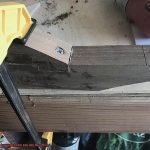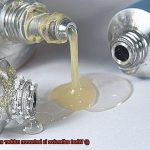Woodworking enthusiasts always wonder: is wood glue stronger than screws? It’s a debate that sparks curiosity and ignites discussions in workshops everywhere. But fear not, because we’re here to settle this once and for all. We’ll dive deep into the world of woodworking, comparing the mighty power of wood glue against the trusty strength of screws. So get ready to unravel the mysteries behind adhesive bonding and mechanical fastening, as we explore which method reigns supreme. Let’s get started.
Advantages of Using Wood Glue
Contents
- 1 Advantages of Using Wood Glue
- 2 Disadvantages of Using Wood Glue
- 3 Advantages of Using Screws
- 4 Disadvantages of Using Screws
- 5 Comparing the Strength of Wood Glue and Screws
- 6 Factors that Affect the Strength of a Joint
- 7 Hybrid Joinery: Combining the Benefits of Both Adhesive Bonding and Mechanical Fastening
- 8 Conclusion
Wood glue offers several advantages when it comes to woodworking projects:
- Strong Bond: Wood glue creates a strong and durable bond between two pieces of wood. The bond formed by wood glue is often stronger than the wood itself, making it ideal for fragile or delicate wood pieces that may not withstand the stress imposed by screws or nails.
- Even Distribution of Stress: Wood glue distributes stress evenly across the entire glued area, minimizing the risk of cracking or splitting in the wood. This is especially beneficial when dealing with heavy loads or pressure, as the even distribution of stress helps ensure the joint’s durability and longevity.
- Aesthetically Pleasing Finish: Wood glue provides a seamless and invisible bond between two pieces of wood, resulting in a clean and aesthetically pleasing finish. Unlike screws or nails, which leave visible holes or marks on the surface of the wood, wood glue allows for a smooth and uninterrupted appearance. This makes it an ideal choice for projects where visual appeal is important, such as furniture making or cabinetry.
- Versatility: Wood glue can be used in a wide range of woodworking applications. It can be used to join different types of wood, including hardwoods and softwoods, as well as other materials like plywood or MDF (medium-density fiberboard). Wood glue is also suitable for various woodworking techniques such as edge gluing, dowel joints, biscuit joints, and tongue-and-groove joints.
- Increased Structural Integrity: Wood glue enhances the structural integrity of woodworking projects by creating a strong bond between components. This helps reinforce joints and prevent them from loosening over time. It is particularly beneficial in load-bearing applications, such as constructing furniture or building structural frames, where the strength and stability of the joints are crucial.
- Easy to Use: Wood glue is generally easy to use, requiring minimal tools or equipment for application. It typically comes in a squeeze bottle or a brush-on form, allowing for precise and controlled application. Wood glue also has a longer open time compared to other adhesives, giving users ample time to adjust or align the pieces before the glue sets. Cleanup is usually straightforward as well, with excess glue easily removed with a damp cloth or sponge.
Disadvantages of Using Wood Glue
Wood glue, while a popular choice for joining wood, has several disadvantages that should be considered. First and foremost, wood glue may not be as strong as screws when it comes to sheer strength and holding power. This means that for heavy loads or constant stress, screws may be a better option.
In addition, wood glue requires proper surface preparation for optimal bonding. Surfaces must be clean, dry, and free from any contaminants or finishes. Failure to properly prepare the surfaces can lead to bond failure or weakening over time.
Another disadvantage of using wood glue is the longer curing time compared to screws. Wood glue can take several hours to cure, and in some cases, it may take up to 24 hours or more for the glue to fully set. This can be a disadvantage if immediate results are needed or if working on time-sensitive projects.
Furthermore, wood glue may not be suitable for all types of wood. Certain woods, such as oily or resinous woods, may not bond well with certain types of wood glue. In these cases, alternative adhesives or fasteners like screws may be necessary.
Disassembling glued wood joints can also be difficult and may result in damage to the wood. Unlike screws that can be easily removed, glued joints often require forceful separation, which can lead to splintering or breaking of the wood.
Moreover, wood glue is susceptible to moisture and temperature changes. Excessive moisture or extreme temperature variations can weaken the bond and cause the glue to lose its adhesive properties. This is particularly important to consider when using wood glue for outdoor projects or in areas with high humidity.
The strength of wood glue may diminish over time due to natural aging and exposure to environmental factors. While it provides a strong initial bond, the adhesive properties of wood glue can deteriorate over years, resulting in a weakened bond and potential joint failure.
Wood glue can also be messy and difficult to work with. It requires careful application and even distribution on both surfaces being bonded. Excess glue may squeeze out and create unsightly and hard-to-remove residue, necessitating time-consuming cleanup with solvents or scraping tools.
Furthermore, wood glue may lack versatility compared to screws. Screws can be used for various applications, allowing for disassembly and reassembly if needed. Wood glue, on the other hand, provides a permanent bond that may not allow for easy adjustments or modifications.
Lastly, wood glue may not be suitable for load-bearing or structural applications in some cases. While it can provide sufficient strength for many woodworking projects, certain applications may require the additional support and stability provided by screws or other fasteners.
Advantages of Using Screws
When it comes to fastening, screws are the ultimate choice for those seeking strength and reliability. They offer a multitude of advantages over other fastening methods, particularly for those looking for alternatives to glue.
Firstly, screws are renowned for their strength and durability. Unlike nails or other fasteners, screws are designed to create a secure and long-lasting bond. The threads on screws grip the material tightly, resulting in a connection that can withstand heavy loads and provide stability for structural components.
Another advantage of using screws is their adjustability and removability. Unlike adhesives or glue, screws can be easily tightened or loosened as needed. This makes them incredibly convenient for projects that may require future adjustments or disassembly. Plus, if a screw needs to be replaced or removed, it can be done without causing any damage to the surrounding material.
Screws also boast incredible versatility. They can be used with various materials such as wood, metal, and plastic. With different sizes and types available, including wood screws, machine screws, and self-tapping screws, users can choose the perfect option for their specific needs. Whether you’re working on woodworking, construction, or simple DIY projects, screws are up to the task.
Moreover, screws provide enhanced holding power compared to nails or staples. The threads on screws bite into the material, creating a firm grip that resists pulling out or loosening over time. This is particularly beneficial when dealing with applications that require a secure fastening.
Using screws for assembly is typically easier compared to alternative methods. Tools like screwdrivers or drills allow for better control over the process, ensuring precise placement and tightening of screws. This results in accurate positioning and alignment during assembly, leading to a professional finish.
In certain situations, you may need to disassemble a structure or project. Screws make this process easy without causing any damage to the material. This is especially advantageous if you plan to reuse components or make modifications in the future. Simply unscrewing the screws allows for a clean and efficient disassembly process.
Furthermore, many screws offer excellent corrosion resistance. Materials such as stainless steel or galvanized steel ensure the longevity of screws, making them perfect for outdoor projects or environments with moisture. With corrosion resistance, screws remain strong and reliable over time.
Disadvantages of Using Screws
Screws, while advantageous in woodworking projects, also come with their fair share of drawbacks. Here, we explore the disadvantages of using screws in detail:
- Splitting and Cracking: Screws can cause splitting or cracking in the wood, particularly near the edges or ends of the material. This compromises the structural integrity of the project and weakens its overall strength.
- Pilot Holes: Before inserting a screw, a pilot hole needs to be drilled, preventing the wood from splitting. This additional step adds time to the assembly process and necessitates extra tools.
- Visible Holes: When screws are removed or replaced, they leave behind unsightly holes in the wood. This is particularly undesirable for finished products like furniture, where aesthetics are crucial.
- Loosening Over Time: Screws can loosen due to vibrations or changes in temperature and humidity. As a result, joints become less secure, requiring regular maintenance or tightening.
- Limited Clamping Force: Depending on the type of screw used, it may not provide as much clamping force as other fasteners like nails or staples. This weakness can lead to less sturdy joints, especially when high strength is required.
- Difficulty in Concealment: Screws can be more challenging to hide compared to other fasteners. In furniture assembly, for instance, they may be visible on the surface, detracting from the overall appearance and aesthetics.
- Corrosion: Screws are typically made of metal and can corrode over time when exposed to moisture or specific environmental conditions. This corrosion weakens the screws and potentially compromises joint integrity.
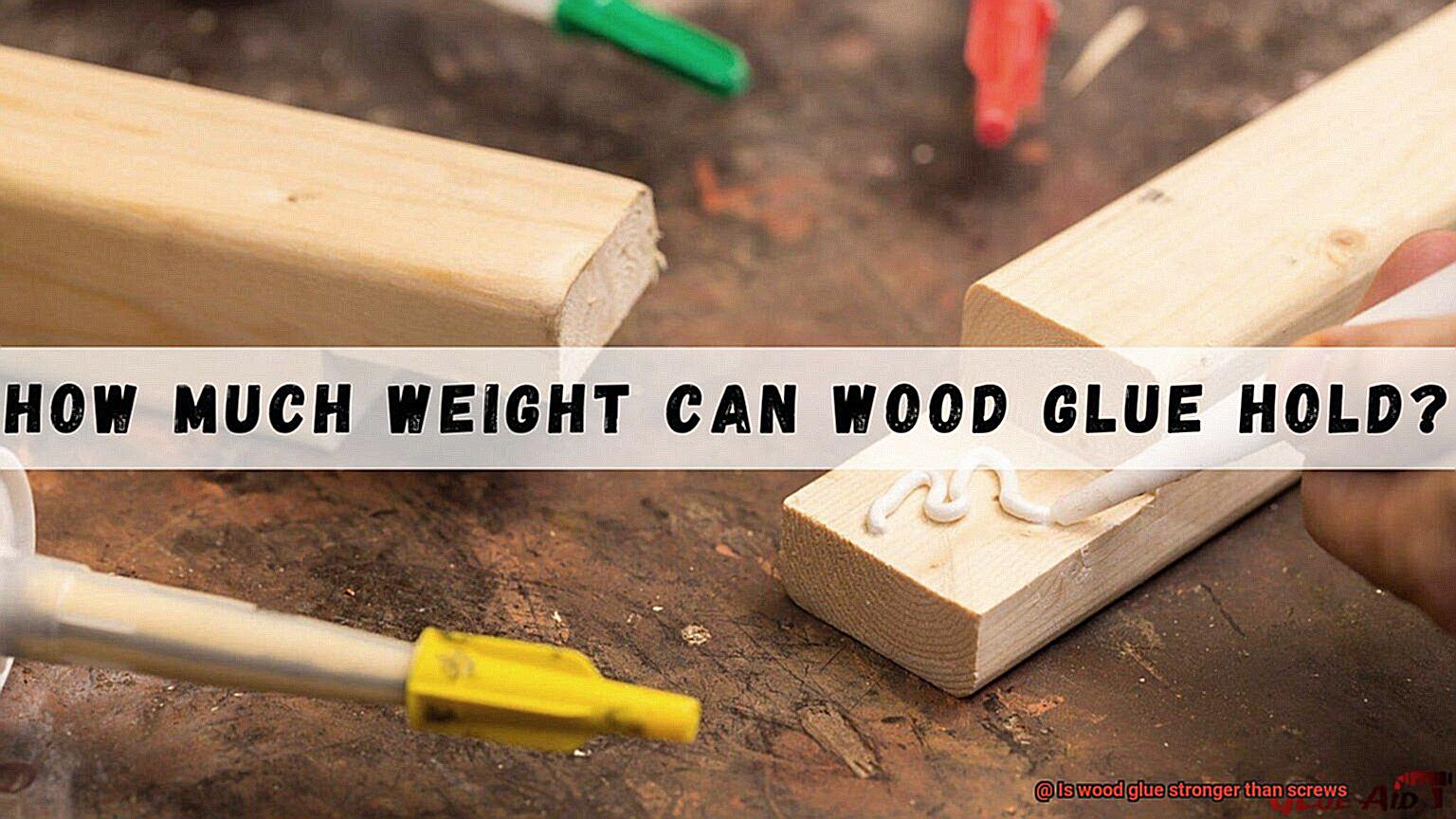
Comparing the Strength of Wood Glue and Screws
When it comes to joining pieces of wood together, two common methods are using wood glue or screws. Each method has its own strengths and weaknesses, and understanding them can help determine the best approach for any woodworking project.
Wood glue offers several advantages over screws. Firstly, it creates a strong bond that evenly distributes stress along the entire joint, resulting in a stronger overall connection. This is particularly beneficial when joining pieces of wood that will be subjected to heavy loads or constant movement. Wood glue’s ability to provide a seamless and invisible connection is another advantage. Unlike screws, which leave visible holes and disrupt the aesthetic appeal of the project, wood glue creates a smooth surface without any visible fasteners. This makes it an ideal choice for projects where appearance is important, such as furniture or decorative pieces.
Another advantage of wood glue is its ease of use. It requires minimal tools and can be easily applied to the surfaces being joined. Additionally, it creates a permanent bond that does not loosen over time, providing long-lasting durability to the joint.
However, it’s important to note that wood glue does have some limitations. It requires proper surface preparation and clamping pressure to ensure a strong bond. It also requires sufficient drying time before the joint can bear any weight or stress. In addition, wood glue may not be suitable for certain types of wood that have oily or resinous surfaces, as it may not adhere properly.
On the other hand, screws offer higher sheer strength and can withstand greater stress and tension compared to wood glue. They create a mechanical connection by gripping the wood with their threads, relying on friction to hold the joint together. However, screws have their own downsides. They can be visually unappealing, as they leave visible holes in the wood surface. They may also damage the wood if not inserted correctly or if excessive force is applied during installation. Additionally, screws are susceptible to corrosion, which can weaken the joint over time.
Factors that Affect the Strength of a Joint
The strength of a joint is a delicate balance, influenced by various factors that must align in perfect harmony. Like the strands of a spider’s web, these factors interweave to create a bond that can withstand the test of time.
First, the type of wood used sets the foundation for a strong joint. Hardwoods, with their dense fibers and robust nature, provide a sturdy base. Oak and maple stand tall as pillars of strength, while softwoods like pine or cedar offer a more flexible but less resilient option. Choosing the right wood is the first step towards building a joint that can weather any storm.
Next, surface preparation becomes paramount. The surfaces to be joined must be meticulously cleaned, free from any imperfections or foreign substances. Just as a painter primes their canvas, so too must the wood be primed for success. A flat and smooth surface allows the adhesive or screws to firmly grip and bind the pieces together.
Ah, the adhesive – the magical elixir that transforms separate parts into a unified whole. Wood glue takes center stage, its sticky embrace fusing the pieces with an unyielding bond. Polyvinyl acetate (PVA) glue or epoxy adhesive each possess unique qualities that must be considered when choosing the right potion for each project.
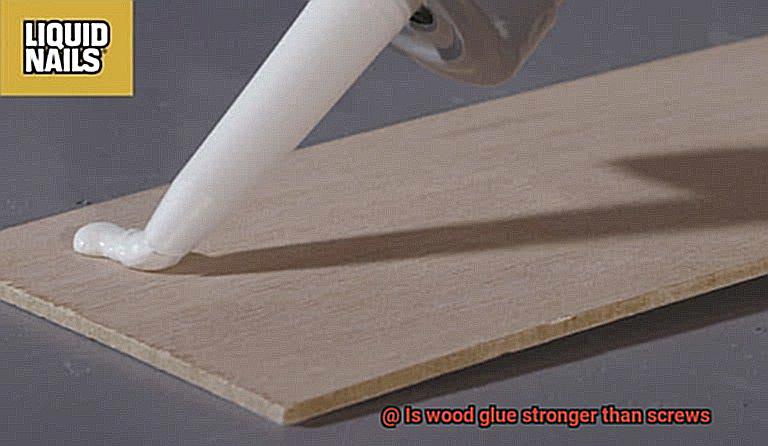
But applying the adhesive is an art in itself. With steady hands and precision, a thin layer is spread evenly across both surfaces – a symphony of careful strokes. Screws, too, must be driven in with purpose and accuracy. One wrong move, one misaligned angle, and the joint’s strength may waver.
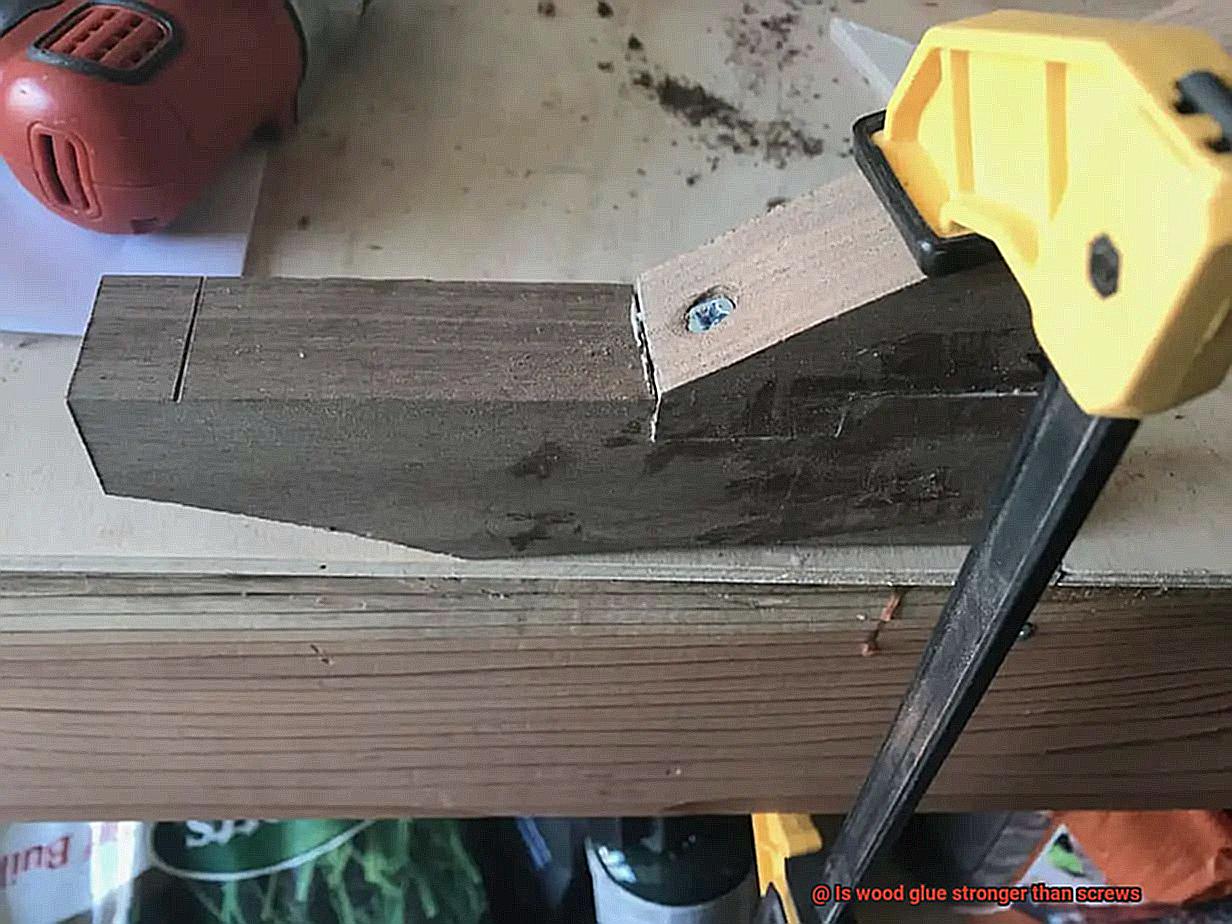
And then comes the clamping pressure – the final act in this delicate dance. The pieces are held together tightly, like two lovers locked in a passionate embrace. As the adhesive cures, this pressure ensures that every fiber intertwines and binds tightly together. Without it, the joint may crumble under pressure.
Lastly, the environmental conditions cast their shadow upon the joint’s strength. The temperature, humidity, and exposure to moisture or UV rays can all chip away at the bond over time. Like a relentless foe, these factors must be considered and accounted for when selecting the adhesive or screws.
Hybrid Joinery: Combining the Benefits of Both Adhesive Bonding and Mechanical Fastening
Hybrid joinery is the innovative technique of combining adhesive bonding and mechanical fastening in woodworking projects. This approach offers numerous advantages, including increased strength, improved durability, ease of assembly, and enhanced aesthetic appeal.
By using adhesive bonding, such as wood glue, the joint is evenly distributed across the entire surface. This results in a strong and stable connection between the pieces of wood. The adhesive also provides some flexibility, allowing the wood to expand and contract without compromising the joint. On the other hand, mechanical fasteners, such as screws or nails, offer immediate and strong connections. They add reinforcement to the joint and can withstand higher loads.
The combination of adhesive bonding and mechanical fastening creates a joint that is stronger than using either technique alone. This hybrid approach enhances the overall strength of the joint, making it more resistant to shear forces and other types of stress. It also improves the reliability of the joint by providing a backup support system. Even if the adhesive bond fails in some areas, the screws or nails hold the joint together.
Additionally, hybrid joinery allows for greater versatility in woodworking projects. Different joints may require different techniques depending on their specific requirements. Hybrid joinery enables woodworkers to tailor their joints to meet these needs, resulting in stronger and more durable constructions.
In terms of ease of assembly, hybrid joinery offers advantages over traditional methods. The combination of adhesive bonding and mechanical fastening simplifies the joining process and reduces assembly time. It also allows for disassembly and reassembly if needed.
Furthermore, hybrid joinery enhances the aesthetic appeal of woodworking projects. The use of screws or nails can be strategically placed to provide an appealing visual design element. At the same time, the adhesive bond eliminates visible fasteners on the surface, creating a clean and seamless appearance.
X6y9VUiM7TI” >
Conclusion
In conclusion, the age-old debate of whether wood glue surpasses screws in strength boils down to the unique demands of your woodworking venture. Wood glue boasts an array of advantages, including a formidable bond, even stress distribution, visually pleasing finishes, adaptability, heightened structural integrity, and user-friendly application. It shines particularly bright when handling delicate or fragile wooden pieces and projects that prioritize aesthetic allure.
However, it’s important to acknowledge that wood glue does have its limitations. When it comes to sheer strength and holding power, screws often reign supreme. Achieving optimal bonding with wood glue necessitates meticulous surface preparation and clamping pressure. The curing time for wood glue is lengthier compared to screws and may not be ideal for all types of wood or load-bearing applications. Disassembling glued joints can prove arduous and may inflict damage upon the wood itself. Furthermore, wood glue is susceptible to moisture and temperature fluctuations over time, potentially compromising its adhesive properties.
Conversely, screws offer a host of benefits such as heightened sheer strength, adjustability, removability, versatility across various materials, enhanced holding power, effortless assembly and disassembly procedures, exceptional corrosion resistance (depending on the material), and precise placement during construction.
To achieve unrivaled strength in your woodworking endeavors, consider adopting a hybrid joinery approach that combines both adhesive bonding and mechanical fastening techniques. This amalgamation yields increased potency, improved longevity, ease of assembly/disassembly procedures, elevated aesthetic appeal while catering to specific joint requirements.
In summary, both wood glue and screws possess their own set of strengths and weaknesses. Familiarizing yourself with these factors empowers you to make an informed decision based on the unique needs of your project.



